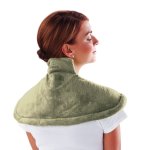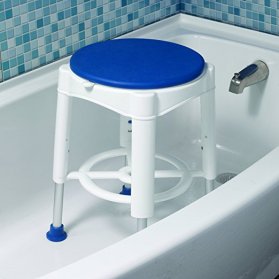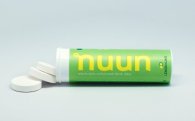See Part 1: Vocational and organizational health and Part 3: Mental health, as well.
Why an accommodations and products series? One of the things that chronic health problems will do to you is make you try anything to make things even a little better. My friends, the goal for this series is that you won’t have to go through as much of the rabbit trail searching that I did, because now you get to learn from my mistakes and get straight to the good stuff! This part one of a 3-part series about my favorite things that help me wisely manage. Many of these accommodations are cheap and even free; some are more costly, but I promise they have made a big enough difference for me that I wanted to mention them anyway.
I’ve learned from the best occupational therapists, physical therapists, (mental health) therapists, doctors, nurses, peers, and so on over the years – especially during my month at the Mayo Clinic Pain Rehabilitation Clinic – about how to manage the tricky balance of caring for my health concerns and having a rich, full life. The 3 parts of this accommodations and products series will be about vocational/organizational health, physical health, and mental health. This particular post is about physical health accommodations and how they help me establish the rhythms of my life.
(For reference, I have a Mac and an iPhone, but I’m sure that there are equivalent apps on other computers and phones, too.)
Physical health
- Heating pads (back and shoulders)

God bless these. These are maybe what I use the most to give myself some quick relief after a harder day. I use an extra-long back heating pad ($31 on Amazon, perhaps cheaper in-store somewhere) and special neck and shoulder heating pad [I mean, look at this model’s face as she uses it ;)] ($35 on Amazon), both made by Sunbeam.
- Shower stool
This is another thing that I use multiple times a week. Most of the time, I don’t end up using it to sit for the entire shower, but because of my dysautonomic condition postural orthostatic tachycardia syndrome (POTS) on top of my chronic pain condition, it’s crucial to have this available to me for two reasons: 1. Countermaneuvers, which can help to decrease symptoms by lessening the amount of blood that pools in the legs. I cannot talk enough about how important these are for people who are living with POTS. I wrote a bit about them in my “how to survive POTS” piece a few months back, but these help get blood flowing – that is, to get oxygen to your brain when your body starts to feel faint (or even move its way toward fainting). The one that I do in the shower is to have my stool right in front of me and to put one of my feet up on it so that my leg is at a 90-degree angle. This is what I do to not feel lightheaded when shaving or spreading body wash.2. If I am feeling particularly achy or light-headed, I can use it to sit without a problem – then, I usually don’t have to go without showering because of a higher symptom day.My stool of choice was more expensive than the average one at around $60 on Amazon, but it is so good.Last piece of advice on this subject: Don’t shower in the hottest water possible if you have POTS, and make sure to turn down the temperature before you exit.
1. Countermaneuvers, which can help to decrease symptoms by lessening the amount of blood that pools in the legs. I cannot talk enough about how important these are for people who are living with POTS. I wrote a bit about them in my “how to survive POTS” piece a few months back, but these help get blood flowing – that is, to get oxygen to your brain when your body starts to feel faint (or even move its way toward fainting). The one that I do in the shower is to have my stool right in front of me and to put one of my feet up on it so that my leg is at a 90-degree angle. This is what I do to not feel lightheaded when shaving or spreading body wash.2. If I am feeling particularly achy or light-headed, I can use it to sit without a problem – then, I usually don’t have to go without showering because of a higher symptom day.My stool of choice was more expensive than the average one at around $60 on Amazon, but it is so good.Last piece of advice on this subject: Don’t shower in the hottest water possible if you have POTS, and make sure to turn down the temperature before you exit. - Access to an elliptical (or instead, steps to walk up and down at least moderately quickly instead)
This is something you need to work out with your doctor because exercise’s effects will be very different from condition to condition, but appropriate and gentle (but still pushing myself!) cardiovascular exercise has been a Godsend for my fibromyalgia, POTS (as I’ve written about here), stomach conditions, and mental health. I’ve worked my way up to about 25-30 minutes of cardio 4 times a week.
- Water bottle
For a lot of different medical conditions, including POTS, it’s important to drink more than the average person needs to. Talk to your doctor about exactly how much, but at this point, I aim for between 96-128 ounces a day, so I try to refill my 20-oz water bottle at least 4 times per day. I use a Zulu glass water bottle ($15) because it affects the environment less negatively, which is sturdy, leak-free, and cute (but also heavy – just a warning).
- FitBit
I need to monitor my heart rate to see how my POTS meds are doing, how much harder I can exercise (or if I need to slow down), and how much I’ve been sleeping. For that, I have a Fitbit Charge HR, but I know that there are newer models and different brands. These are more expensive, but they keep getting smaller, cuter, and better.
- Compression gear
A must-have for people with venous pooling like that in POTS. I wear thigh-high compression stockings or compression shorts whenever I go to work to feel more confident about being able to stand. Your doctor can tell you more about what they think about the strength of pressure that they’ve found helpful for POTS patients because compression gear can be purchased in many different mmHg ranges – for example, my stockings are 20-30.
- Melatonin
I have trouble sleeping soundly, so I take 10 mg of melatonin each night. Again, this is something that you’d need to talk to your doctor about before starting, but I like Puritan’s Pride melatonin capsules best, which cost about 6-7 cents per pill on Amazon. In addition to this medical intervention, I use blackout curtains (detailed below) and a few phone and computer apps that I talked about in the vocational health portion of this article set [f.lux and Shady apps for computer (with the equivalent settings on iPhone) to increase warmth/reduce blue light as the day goes on and to reduce brightness below lowest possible brightness. Let f.lux and Shady on your computer, and certain settings on your phone (Night shift for blue light and accessibility settings for lower-than-lowest brightness, to help you do that. Best part: They’re all free, and you can adjust the settings for when you wake up and go to bed).]
- Blackout curtains
I’m a light sleeper. I sometimes want to take a nap in the middle of the day. These make my room a cave. The kind you’d want to get depends on the shape of your window, so I won’t put up a link to mine here, but know that the folks at Home Depot were quite helpful!
- Meds containers
Both of these containers – both the AM/PM ones I keep in my home (I have two so I can set up two weeks worth of medications at one time – $10 on Amazon) and the AM/PM one I keep in my purse (so I can have two days worth of morning and evening medications in case I sleep other places or get stranded somewhere – $5 on Amazon) – are easy-to-open and large enough to keep many pills inside. (Note: because they are easy-to-open, they can also spill out slightly more easily.) Also, shoutout to Express Scripts, which is a mail-order pharmacy helps me to get medications at home without having to go to the pharmacy!
- Nuun tablets
 To help with POTS symptoms, I put Nuun tablets in my water when I’m about to exercise because they give me some electrolytes without all the sugar of Gatorade (because cavities are a thing, you know…). I use the original formula and they’re quite tasty! I keep a tube in my purse for if I ever feel extra symptomatic, too. $24 on Amazon for a box of 4 different flavors.
To help with POTS symptoms, I put Nuun tablets in my water when I’m about to exercise because they give me some electrolytes without all the sugar of Gatorade (because cavities are a thing, you know…). I use the original formula and they’re quite tasty! I keep a tube in my purse for if I ever feel extra symptomatic, too. $24 on Amazon for a box of 4 different flavors.
- Buffered salt tablets
I have trouble getting as much salt as I need to for POTS through my foods and drinks, so I was recommended to take 2 salt tablets before each meal and before I exercise. Since these are buffered now, they aren’t as unpleasant on the digestive system as they used to be. $25 on Amazon for 3 100-tablet bottles.
- Dry shampoo
This works better with longer hair than shorter hair, but dry shampoo helps make you feel a little bit more ready to face the world and look like you’re doing okay, even when you haven’t had the energy to shower. (Here’s a whole post about how to feel cleaner when you don’t have time or can’t shower.) There are multiple brands that I’ve liked, but Batiste is especially excellent in terms of availability, price, and results. It’ll depend on where you go, but a good brand of dry shampoo aerosol bottle will be between $8-15.
- Extra-comfortable pillows, mattress topper, and bed angle
To help with comfort, sleep quality, and acid reflux and POTS symptom reduction. I would ask your doctor for the best kinds of bedding for your health conditions, but I use a faux temper-pedic pillow, a feathertop mattress topper, and my mom put between 3-6″ of wood pieces under each of the back two edges of my bed to give it an angle because she’s great at those kinds of things.

- Weights for home (ankle and hand)
- Flossers and electric toothbrush
 Having to do less with my arms and getting more out of my attempts to be dentally hygienic at once is a double win. The brands are pretty interchangeable for the flossers, but I love my Phillips Sonicare toothbrush (often about $25 on Amazon).
Having to do less with my arms and getting more out of my attempts to be dentally hygienic at once is a double win. The brands are pretty interchangeable for the flossers, but I love my Phillips Sonicare toothbrush (often about $25 on Amazon).
- Insoles
I get plantar fasciitis, which is unnecessary pain on top of the pain that I get from fibromyalgia already. If you have pain in your feet as well, it may be smart to invest in a good set of insoles for your shoes. Ask your doctor which type could be helpful. I have custom-made insoles from a podiatrist because I also have one leg that’s longer than the other, so they’re formed to cover half of my height discrepancy with a slight heel. My insurance paid for these, but I have exceptionally good insurance. However, if you call ahead to your insurance, you may be able to get a similar situation.
- Light bra
For my worst pain days when I still have to look acceptable. You can typically find these in pajama sections of stores or in the lingerie section. They look like bandeaus.
- Findmeglutenfree app
I’m so grateful for this free app that lists nearby restaurants that have options I can eat. You can get even more specific, including vegetarian.
- Seats in car
My car seats have an unfortunate angle for my back problems, so I’ve wrangled together some comfort for myself through 3 different pillows (because subtlety isn’t necessarily something you get to demand when you deal with chronic pain) for the different parts of my spine. I sit on a coccyx support pillow ($40 on Amazon), I rest against a lumbar support pillow ($25 on Amazon), and I have a small memory foam pillow that I put on top of these to reach to the top of my neck and the head rest in my car. They all keep my posture as good as possible.
- Car mount for cell phone
You don’t have to attach anything to the dashboard of your car to use this cheap and easy magnetic phone holder that helps me to keep my neck alignment good and have my phone out of my hands. $8 on Amazon.
- Vitamins, Citrucel, and Vitron C
Lastly, I think that these are somewhat self-explanatory, but these are a few health maintenance items that my doctors have recommended to me over time. Again, since these are pills, have your doctor look over this idea if you’re interested, but I take Centrum Silver for women, Citrucel for general stomach comfort (IBS sucks, y’all, and Citrucel helps me to remain as steady as possible without fluctuating in either direction), and Vitron-C for iron supplementation to avoid anemia (this one is specifically formulated to upset your stomach less by having vitamin C to aid in absorption). I have all of these on “subscribe and save” on Amazon so they come just before I run out!
I hope that any of these suggestions can be helpful for you in your journey!

I use several items on this list especially my fitbit, electric tooth brush and dry shampoo! They’re necessities!
LikeLike
Right?! I don’t know what I would do without them.
LikeLike
My heating pad is my best friend for my IBD! It is so soothing for stomach aches. I can appreciate this list of must-haves!!
LikeLike
I’m so glad it resonated with you!!
LikeLike
Thanks, great list! Will be sure to check some of them out! 🙂
LikeLike